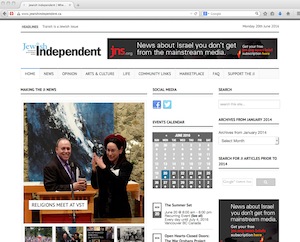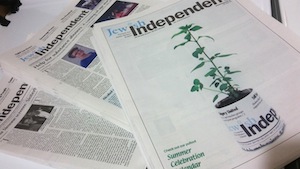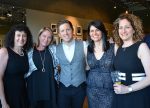Russ Klein recently marked his 10th year as head of school at King David High School. (photo by Pat Johnson)
Russ Klein resisted becoming King David High School’s head of school. Ten years ago, he was a vice-principal in the Vancouver school district, an 18-year veteran of the public system. One of his colleagues – Ben Lubinizki, a teacher at Prince of Wales, where Klein was VP – was a King David parent and on the search committee for a new head of school.
Klein was on track to become a principal in Vancouver and, besides, after attending Vancouver Talmud Torah, becoming bar mitzvah at Beth Israel and volunteering on kibbutzim as a young adult, he hadn’t had much to do with the Jewish community. But Lubinizki was persistent and encouraged Klein to just drop by the school and check it out.
“I saw what things were like,” Klein recalled. “I saw the potential. I also saw lots of things that I thought they needed a little bit of guidance on at that point.”
It turned out that the Vancouver School Board thought a time at King David could be a good experience for Klein before he became a principal, so offered him a two-year leave of absence.
“I thought it was going to be a temporary position,” he said. He is now celebrating his 10th year at the school and, as he reflects on the past decade, he says the move not only altered his career path, it changed his life.
A year into the two-year “temporary” gig, the VSB called with a principalship for him.
“I had to think hard about it because, in a little over a year, I had quite fallen in love with this particular place,” he told the Independent during an interview in his office at King David. “I loved everything about it, from its size to the people I was working with, to the mission that it had.”
But, while job security in the public system is assured, he said, “In the private system you don’t have any.”
The King David board offered him a 10-and-a-half year contract and Klein now hopes to retire – eventually – from a role he loves.
“I think it’s worked out quite well,” he said.
In May, at a major celebration, KDHS will celebrate 13 years – its bar mitzvah year – in the current purpose-built building. The school’s history dates back to 1986, when it was founded as Maimonides High School. It was called Vancouver Jewish High School in 2000/01, then Vancouver Talmud Torah High School until 2004, when it was renamed King David. It has always been a Grade 8 to 12 school.
As head of school for a decade, Klein has seen plenty of change.
Almost all Grade 8 students now travel to Israel on an 11-day experience, spending most of the time in the Galilee, Vancouver’s partnership region. Some of the kids in Har Vagai school – King David’s partner school there – live on Kibbutz Shamir, where Klein volunteered a couple of decades ago. In Grade 9, the Israeli students come to Vancouver.
In recent years, KDHS has changed its Grade 9 trip, which used to go to the U.S. Holocaust Memorial Museum in Washington, D.C., to an alternative trip to Los Angeles, where students visit the Museum of Tolerance and the Los Angeles Museum of the Holocaust. The time difference – and the need to change planes – made the Washington trip difficult.
“We thought we could get more out of the trip,” said Klein. “L.A. is a much shorter, easier [trip], it’s less expensive. But it added another feature, which is that we have a shomer Shabbat weekend in Los Angeles.” (The trip didn’t happen this year as they are moving it to Grade 10.)
A group of King David students are also going to Guatemala to volunteer in a community where women and children from disadvantaged and often abusive backgrounds access support and skills.
In all these offerings, financial ability is never a factor in participation, Klein said.
In the classrooms, change also has been constant. New options have been added to electives, and the school has added advanced math and science programs as well as a Grade 10 outdoor experience program. King David students take all the core subjects public school students do, plus Judaics.
“In a typical Vancouver high school, most students will enrol in eight classes,” Klein explained. KDHS students take two more courses in various aspects of Jewish studies, including (in most cases) Hebrew language, Jewish history and “what we would call Jewish values: ethics, Torah, what does it mean to be Jewish?”
On top of an intense academic load, Klein said, “Our participation in athletics is outrageously high for a school of our size. Probably 70% of our kids are on one athletic team or another – or more.”
Challenges remain, Klein acknowledged. The school has pretty much met its student capacity and, while expansion seems unlikely in the near future, the redevelopment of the Jewish Community Centre of Greater Vancouver, a few steps west of the school, could present opportunities for a dedicated gym and shared use of space for classes, drama and music performances.
The changes in Klein’s career have been accompanied by changes in his personal life.
“As a person who didn’t have community, coming to a community that is so kind and caring has been absolutely amazing. It has been the best thing that could have happened from my point of view,” he said. “This has given meaning to my life, aside from the fact that, as a divorced person, I now have a very committed relationship with a former King David parent [Deborah Youngson] who is very traditional herself, which has brought more Jewish meaning to my life.”
Another change is also evident. He’s grown what he jokingly calls “the rabbinical beard,” which he says leads people to assume he is very wise.
“I do have a good chuckle every time I get an email that says ‘Dear Rabbi Russ.’”



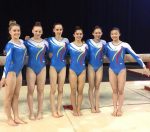
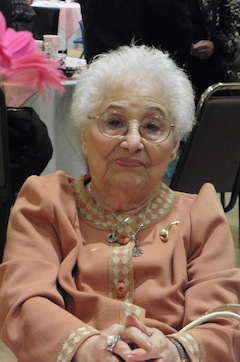
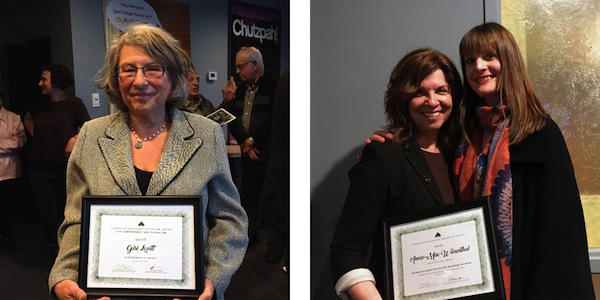

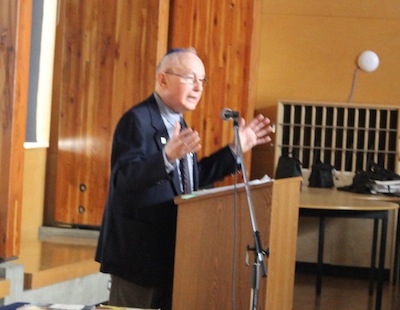


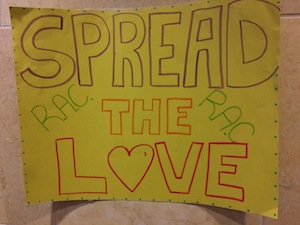

 Storming the Digital Divide contains many illustrated stories from the online anti-poverty community, which bring the facts and figures closer to home, as well as the impact of PovNet over the 20 years since it began in 1997. While Goldsmith is no longer the organization’s executive coordinator – a post she filled for 18 years, until 2015 – she remains passionate about its work. And some of it rubbed off. Here are some of the comments students wrote after her talk.
Storming the Digital Divide contains many illustrated stories from the online anti-poverty community, which bring the facts and figures closer to home, as well as the impact of PovNet over the 20 years since it began in 1997. While Goldsmith is no longer the organization’s executive coordinator – a post she filled for 18 years, until 2015 – she remains passionate about its work. And some of it rubbed off. Here are some of the comments students wrote after her talk.

